Every day America gets deeper into the shit in Colombia. We’re dumping planeloads of cash on the Colombian army — $1.5 billion is what Rumsfeld’ll admit, so you gotta assume it’s more like ten billion with the rest squeezed through the usual CIA laundries. Colombia’s got this new gung-ho president Uribe, and he says he’s gonna ratchet up the war against the rebels, which makes Bush and Ashcroft and the DEA real happy.
The big rebel group, FARC, have this “bring it on” attitude too. They’re always on the lookout for new ways to kill people. They even hired three ex-IRA guys to show’em how to make remote-launched mortars, and learned so fast they damn near blasted el Presidente right off the platform at his own inauguration.
So with everybody ready to party, it seemed like a good time to give you a little briefing on Colombia, our new pal. But I have to warn you, Colombian history is as messy as a slaughterhouse floor in a blackout. So I’ll give you a choice: the short version (for MTV victims with the attention span of fruit flies), and the long version for serious military buffs.
 FARC even lets women fight.
FARC even lets women fight.First, the short version:
Colombian History and Culture in Three E-Z Steps!
Step 1: Rent Scarface.
Step 2: Fast-forward to that scene where Pacino and his friends try a coke deal with some Colombians. The Colombians want to take the money and keep the coke. They try to persuade Pacino to tell them where the money is by handcuffing him and his buddy to the wall, revvin’ up a chainsaw and sawing off his friend’s arms and legs till the whole room is so splattered with blood you can’t see who’s killing who any more.
Step 3: Replay this scene over and over. And over.
Congratulations! You have just learned the history and culture of Colombia!
But for you old school types, here’s a slower, more detailed look at Colombia, our loveable Latin ally.
Think of Latin America is as a psych ward. Panama would be the sociopath con man.. Argentina’d be this suicidally depressed old bag with delusions of grandeur. Brazil would be a classic nympho slut…and Colombia would be the one who giggles to himself in the triple-locked cage at the end of the high-security corridor, the guy who likes to BBQ his victims and make “Kiss the Cook” aprons out of their skin.
Colombians have been killing each other since the Spanish came ashore and got to work hacking the local Indians into extinction. The only thing that’s changed in the 400 years since then is they’ve been getting better at it every century.
Between 1819 and 1900, Colombia had 50 rebellions and eight full-scale civil wars. Some of the rebellions were quick little coups with only double-digit casualties, but some were huge-scale conflicts. In “The War of A Thousand Days,” (1899-1901), those hardworkin’ Colombian killers managed to knock off 100,000 of their fellow citizens. They kept at it and hit some kind of peak in the 1940s, with an incredibly bloody mess called “la Violencia” that notched up at least 300,000 dead. You know if the Colombians call a period “violencia,” that it’s gonna be muy violencia.
One interesting thing about Colombian killing is they do it both ways: solo and in groups. There are some countries that turn into pyscho killers once they put on a uniform, but wouldn’t even run a yellow light once they’re in civvies again. Two classic examples: the Japanese and Germans. The Japanese did things in China that just don’t bear thinkin’ about…beheading contests, sword practice on pregnant Chinese prisoners, baby-bayoneting volleyball — but those same soldiers went home and turned into shy little salary-men who wouldn’t jaywalk, never mind hurt anybody. Same with the Germans: let’em loose in a gray helmet and they think up stuff that’d make Saddam ashamed — but back home in Dusseldorf they’d die before they’d drop a popsicle stick on the sidewalk.
Then there are the countries that kill real good in private life but won’t fight in uniform — Italians, say. Mean fuckers on the street, in the alley, but put one in a uniform and he can’t wait to throw away his rifle and find a nice cozy cellar to hide out in.
Colombians are a coach’s dream: the switch-hitters of killing. They kill in uniform or out, home or away, on the street or the battlefield. Equal Opportunity Slaughter: men, women, children, dogs — if it moves, they’ll kill it. For any reason. For no reason. For money, for fun, for the Revolution, for the Counter-Revolution, for practice.
 Cocaine users keep Colombians fighting, and Brecher disappointed
Cocaine users keep Colombians fighting, and Brecher disappointedKilling is like the only way you can make a point in Colombia. Take soccer. We all know foreigners get a little crazy about soccer — hooligans, riots, all that. But Colombians do it their way — none of that noise and drunken chair-throwing crap you get with English hooligans. Colombians say it with bullets. In the 1994 World Cup, Colombia lost out because a player named Escobar scored an “own goal.” Escobar flew back to Colombia expecting to get a hard time. But nobody yelled at him. That wouldn’t be the Colombian way. All that happened was that as soon as Escobar stepped out of his house, a man walked up and emptied a whole 9mm clip into him.
Before they got guns, Colombians settled life’s little problems with machetes. I read about this amazing custom in Colombian villages: if two men have a disagreement, they don’t shout, they don’t sue, they don’t bore everybody with long arguments. Nope. Two guys just take up their machetes, then each grabs one end of a serape. When the ref blows his whistle, they start chopping each other up. The first guy to let go of the serape loses. Usually because he’s dead.
The winner, who’s usually bleeding to death himself, walks away covered with glory — and a few quarts of arterial blood. The goat or chicken or whatever it was the fight was about belongs to him, and he staggers off just as happy as a Colombian can be, down to the coffin shop to see if he can trade the goat for an upgrade to the deluxe Mahogany model.
The historians I’ve been reading — typical bleeding-heart college professors — all try to say Colombians aren’t really violent. Oh no! It’s America’s fault, or it’s the United Fruit Company’s fault, or it’s the cocaine trade.
Yeah. Reminds me of this “Cultural Education” visitor we had when I was in 9th grade in Long Beach — this huge Samoan lady who stomped in and told us she was going to “break the stereotype” that Samoans were violent. She sang some Samoan poem and showed us a flower-arrangement, which was supposed to prove to us Samoans were the gentlest people ever to walk the earth. Our mullet-hair dyke teacher stood next to her all nodding and clapping and “Oh, how true!” — and when the big Samoan lady finally shut the hell up, the dyke reached out to try to hug her. Except she couldn’t get her little arms around far enough. It was funny, and about half the class sort of laughed. Samoan lady didn’t like that. She put out one big non-violent Samoan hand about the size of a catcher’s mitt on the dyke’s chest and shoved her halfway across the room. Then the bell rang and the rest of us squeezed around Samoan lady to see if we could make it to the vending machines before Sammy Faumina, this peaceful gentle Samoan guy who liked to bounce white kids’ heads into their lockers, could shake us down for our lunch money.
So how about a little truth for once. As in: Colombians kill. They’ve done it non-stop for 400 years. They’ll do it for another 400. That’s part of the reason it’s hard to explain the current wars in Colombia: because they’re just a little episode in one long war that will never end.
I say “wars” because there are at least three different rebel armies, and God knows how many death-squad “paramilitary” groups fighting right now in Colombia. The three rebel armies have some things in common: they all talk more or less like Commies, they all say they’re for the peasants, and they talk about cooperating — but they’d kill each other in a second if they weren’t too busy fighting the government.
The three groups go by initials, natch: FARC, M19, and ELN. The biggest, by far, is the FARC, with around 18,000 combat troops. That may not seem like a lot by US or Russian Army standards, but those are big conventional armies. Most “guerrilla” groups are real small. They have to be. They need to be mobile, keep their logistics simple, and be able to disappear fast. For that kind of fighting, you don’t really need too many combat troops.
There are guerrilla groups with only a couple of dozen troops that work damn well. In fact, one of the weirdest war stories I ever heard was about a guerrilla army consisting of three guys. They were survivors of a Japanese platoon stranded in the Philippines, and their leader, this hard-ass sergeant, refused to surrender. He decided that it was his duty to the Emperor to kill anyone who entered his territory. For 30 years these three guys controlled a huge chunk of jungle, killing any of the locals who entered their domain. The Philippine Army couldn’t find them; the villagers got the message and left them alone. In other words, they were an effective military force — with three men.
So 18,000 men makes the FARC a huge army by guerrilla standards. They’re by far the most aggressive of the three groups. Like most Latin American guerrilla armies, they have an elite command group who are almost all middle- or upper-class boys’n’girls, commanding troops who are almost all campesinos. (That’s the way Colombia’s army looks too: rich elite command, poor peasant troopers. It’s got the usual Latin American pattern: 400 families own half the wealth, and everybody else lives on beans and rice. )
The two other rebel armies, ELN and M19 (the oldest group) haven’t been run as well as FARC; they’re seen as less powerful and clever and are just holding on. But the FARC really expects and intends to defeat the Colombian Army. This is pretty remarkable, because it’s been a long time since a Maoist peasant army won anything. The Khmer Rouge were the last to do it, and that was 27 years ago. In 1950 the world was jammed with groups like this; now it’s only in weird, fucked-up corners like Nepal and Colombia that they count for anything.
 Al Pacino as Scarface: Colombian war for dummies.
Al Pacino as Scarface: Colombian war for dummies.The FARC’s last big push was supposed to take the big cities — the old Maoist battle-plan, where you strangle the cities and then march in. It failed. FARC lost a lot of soldiers and pulled back to its backwoods powerbases. The only city in Colombia where FARC has any control is Medellin. The slums of Medellin are FARC territory. But most of the troops are dispersed again, over the big tracts of jungle and scrub FARC run.
When the urban offensive failed, FARC decided to go for the soft target: the paramilitaries. The Army was trying to run a kind of Vietnamization program, get the paramilitaries to do some actual fighting — and it worked about as well as it did in Vietnam: as in not at all. The FARC trapped big paramilitary forces in several towns and wiped them out. And I gotta say, it couldn’t’ve happened to a nicer bunch of cowards, murderers and rapists. You can respect soldiers; you can respect guerrillas; but these assholes who dodge combat and slit peasants’ throats for a living need to die, the sooner the better.
And that’s how most Colombians felt too, because when the FARC switched tactics, hitting the paramilitaries instead of the Army, their popularity zoomed. So at the moment they’re riding high, getting more peasant support every time they wipe out another bunch of these pigs.
The FARC is also one of the richest guerrilla groups this side of Al Fatah — thanks to its own coke-‘n’heroin growing and shipping business in the jungle areas it controls, and the Bush press whores like to claim that the rebels are responsible for all the coke killing our kids, blah blah blah. Bullshit. Every faction in the war grows, processes, ships and sells coke: the army, the “paramilitaries,” the rebels, and a whole lot of poor scared peasants who just want a little money.
The FARC can operate close to the cities because the geography of Colombia is as confused and strange as everything else about the place. Colombia’s military situation, with rebels and soldiers within a few miles of each other but rarely making contact, doesn’t make sense unless you see a good map showing the mountains and rivers. Basically, there’s the Andean highlands where the big families and most of the people live. Then there’s the hot swampy coast, where the people are a little less bloodthirsty by all accounts. Then there’s the jungles east and south of the highlands and sometimes right in between mountain ranges. A few miles as the crow flies may mean going from sea level to 10,000 feet. Good ground for rebels, but good ground for defenders too — and all the Army has to do is defend its positions around the major cities. The real dirty work of the war can be left to the Army’s “paramilitary” friend — and the Americans, who are probably going to wade in and start bribin’, defoliatin’, and arc-lightin’ their way through the rebels’ strongholds any day now.
The Army and its “paramilitary” allies are even harder to sort out than the rebel groups. For starters you’ve got the official Colombian Army, which is estimated at 55,000-90,000 combat troops — not nearly enough for the 10:1 ratio you usually need for counterinsurgency warfare. They’re not exactly world-class soldiers, but they held better than expected against the FARC’s last push for the cities, so they’re feeling fairly cocky at the moment.
But it’s not the army that really does the search-and-destroy stuff these days. At least not officially. That part of the CI job is left to “the paramilitaries,” a half-dozen rightwing militias whose job is simply to kill anybody who even smells like a “rebel.” The Army/Paramilitary divide is for public relations purposes only. Government soldiers moonlight as paramilitaries. A guy can be a government soldier all day — doing the nice-nice stuff like guarding a bridge, not hurting a fly…then go home, change into civilian clothes, hop on a pickup and go off to kill villagers as a paramilitary.
You see the same thing in Algeria, where nobody can be sure whether those weird massacres are done by real “Islamic extremists” or soldiers dressed up like Imams to discredit the Islamic parties. Confusing isn’t an accident, it’s the whole idea. Nobody — not the government, the paramilitaries, or the guerrillas — wants to clear it up. They want to win, “by any means necessary” as the man said.
One tactic that’s very important in this kind of war, where confusion is a basic strategy, is the “false flag” technique.. “False flag” means inventing a fake group — rebel or paramilitary — that takes responsibility for unpopular but necessary murders. What this means is that the same guy who kills for the Army in the daytime and the paramilitaries at night sometimes gets paid to dress up as a rebel and kill pro-rebel villagers. It’s an old tactic, but it’s still working well all over the world. In places where propaganda’s more important than actual casualties — pissant little pseudo-wars like Northern Ireland — there are dozens of “false-flag” groups that take credit for killings, so the real players like the UDA or IRA can stay squeaky-clean for the news cameras.
In Colombia, “false flag” killings aren’t so much about faking out the media. (The fact is, the world media couldn’t care less who kills who in Colombia.) False flag killing in Colombia is about a much more basic rule of counterinsurgency warfare: breaking down the trust between the villagers and the guerrillas. Your soldiers dress up as rebels, roar into a village blasting, shout a few “Viva Che!” leftist slogans, then zoom off leaving a few bodies on the street. It stands to reason that the next time the real rebels come to the village asking for food and info, they’re not going to get a friendly reception. Of course, the false flag deal works both ways, so sometimes the rebel groups put on government uniforms and kill a few people, just to keep the peasants from trusting the government.
Are you beginning to get the impression that the life of a Colombian villager is not that restful? They must flinch every time they hear a truck heading for the village, trying to figure out which anthem they should sing when it pulls up. “Madre de Dios, do we put up the Che Guevara poster or the crucifix?”
That’s what this war is: killing everybody in some stinking village. What fun is that? I hate to be a killjoy, but I can’t see how it’d be any fun, let alone any use, for us to join the party. I can think of ten better wars for us to start or join in on. But let’s just stay out of this one. Colombians don’t need our help to kill each other. They do it just fine on their own — always have, always will. Colombia is the kinda place that gives war a bad name.
Hey, you know — I like that “ten better wars” idea! I’ll do it next column. If you want to nominate a war we could start or join in on instead of messing around with Colombia, email me. I’ll pick a top ten.
And remember: a war that isn’t fun is almost as bad as no war at all.
This article was published in issue #148 of The eXile in August, 2002.
Read more: eXile Classic, exile issue 148, The War Nerd, Gary Brecher, eXile Classic, The War Nerd


Got something to say to us? Then send us a letter.
Want us to stick around? Donate to The eXiled.
Twitter twerps can follow us at twitter.com/exiledonline







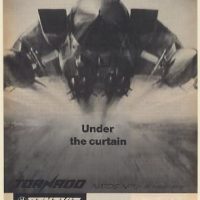
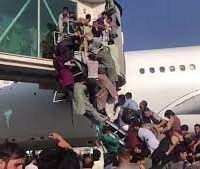

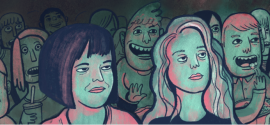
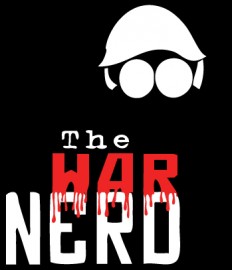
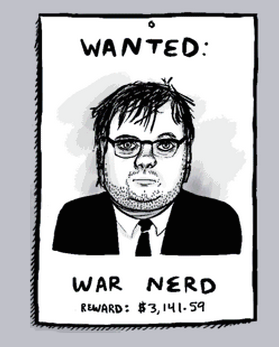


5 Comments
Add your own1. monik | August 7th, 2009 at 1:25 am
have u ever been in colombia?….
the most amazing issues about colombia are:
* the money/income of selling drugs is given for commun people in the most developed countries…those who buy it….so …at the end they support colombian war.
* Colombia has a better economy than other countries who doenst have internal war…why? not for drugs money, for their worker people.
2. schizoid | August 12th, 2009 at 7:31 am
You have very few things right but your argument falls when, for a text written in 2002, you talk about a guerilla that dissapeared more than 10 years ago as extistant.
3. juglar del zipa | August 12th, 2009 at 7:40 am
what kind of historians have you been reading? posada carbó’s last work (la nación soñada) would be the only one to say (following british stereotype malcolm deas) that “colombians are not particularly violent”. and actually he wrote that in order to criticize all the “violetologos” (specially maría victoria uribe) that say that violence is “not only part of the colombian ethos but in the colombian genes”, and also their influence in the journalistic-street discourse about “essential intolerance” and all that shit.
anyways, good post, and feel welcome to come around: we’ll tear you apart gourmet-like.
4. Jhon | April 8th, 2010 at 7:28 am
Well im proud of my assasin head chopping gun blazing heritage thats why no one fucks with us in latinamerica we let our guns do all the talking its so sad that we have to kill or one country man wish we could kill other people you know do some multicultural killing we apreciate the U.S help in our killing spree after all americans love to kill just as much as us colombians thank u for being our number one customer and inspiration
5. Nrmartins | May 14th, 2010 at 11:56 am
Oh, really? is all of that true ? How nice.
Leave a Comment
(Open to all. Comments can and will be censored at whim and without warning.)
Subscribe to the comments via RSS Feed